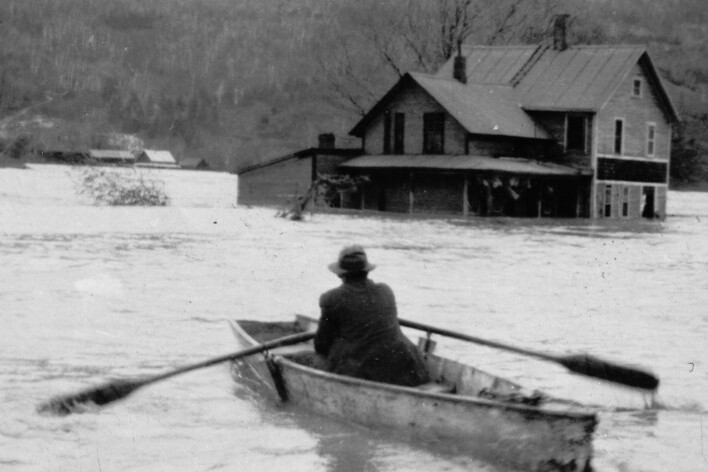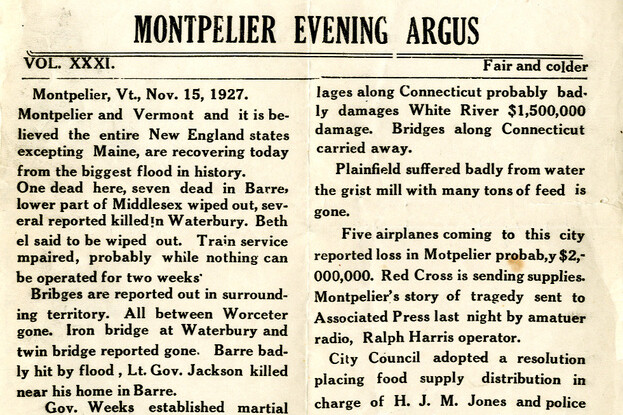The 1927 Flood
In November 1927, Vermont experienced what many consider the most destructive natural disaster in its history in terms of property damage. In that year, large amounts of rain fell in the summer and fall. The heavy precipitation saturated the soil, which would lead to a devastating event months later. That November, heavy rain hit again. The runoff went into streams and rivers. The excess water caused them to overflow. Water rushed into cities and towns across the state. Silt, a foot deep in some places, covered the streets as the water receded. The flood destroyed homes, farms, and roads. Both people and animals drowned in the deluge.
Land use and management had a direct relationship to the historic flood. Years of deforestation, river engineering, and poor agricultural practices impacted Vermont’s soil. These decisions made the land more prone to erosion. Towns built within the valleys were poorly prepared for the flood. Some moved themselves to higher ground following the first few days of rainfall in response to increasing water levels. Others could not escape to higher elevations or uproot their businesses in such short notice. Since 1927, people have attempted to escape potential flood damage. Roads have been rerouted away from rivers, and dams have been built also. Even so, developed towns still remain close to rivers and waterways. To this day, Vermont still suffers from flooding. The Flood of 1927 remains one of the worst the state has experienced historically.
Learn More
Follow the links below to explore related topics.
Learn more about the "Flood of 27" on the Vermont Historical Society's website.
View an image of the 1927 flood from the Digital Vermont Archives.
Read the National Weather Service's "The Great Vermont Flood of 1927."
Watch a video created by Vermont Public called "Vermont’s Great Flood"
Read a press release from the Department of Environmental Conservation titled "95 Years Later: Lessons on Resilience From the 1927 Flood"

